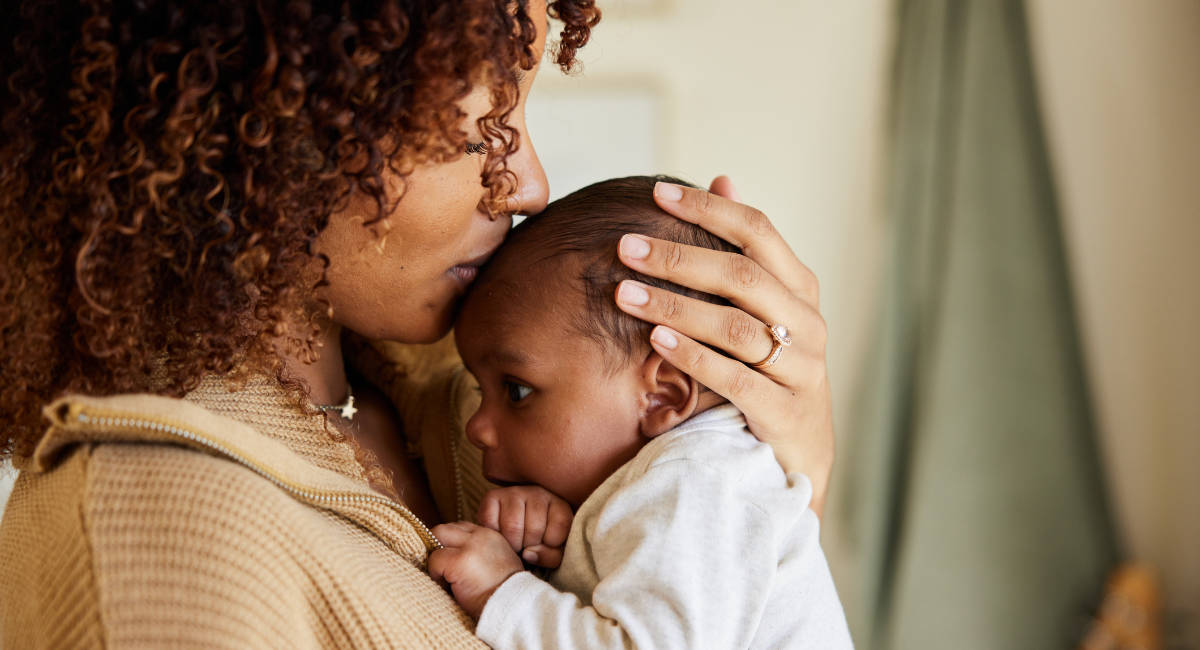A new JAMA report discusses the need for interventions in breastfeeding — and it reveals significant disparities among racial groups.
Black mothers and their babies are at higher risk of dying during the year after birth when compared to their Pacific Islander, Hispanic, white, and Asian peers. Even as overall rates have declined across racial groups, Black babies remain more than twice as likely (10.8 deaths per 1,000 live births) to die before their first birthday than white (4.6 per 1,000 live births) and Asian (3.6 per 1,000 live births) children.
While this is likely the result of multiple factors, the low rate of breastfeeding among Black mothers deserves consideration.
What research reveals
Black babies are both more likely to die in their first year — and less likely to be breastfed — compared to their white peers. While rates of initiation (ever trying to breastfeed), length of breastfeeding (how long a baby is breastfed, regardless of amount) and particularly exclusive breastfeeding (baby receives only breastmilk, whether from the breast or pumped), are generally unimpressive across all racial groups, Black women rank lower than their peers of other races across every single metric.
Regardless of race, the top causes of infant death in the first year of life include “birth defects, preterm birth, low birthweight, complications with maternal pregnancy, sudden infant death syndrome, and injuries.”
Among many contributing factors, Black babies are more likely to be born in lower-performing hospitals (and, when needed, to receive care in lower-performing neonatal intensive care units or NICUs) and to live in areas that experience shortages of primary care doctors. Research suggests that infant mortality rates are lower in states with more primary care doctors.
As of 2021, only 51.4% of all American Black babies received any amount of breastmilk at six months of age, and another 2021 study found that just 40% of U.S.-born Black mothers breastfed at all. The same 2021 study reported that by the time a child was six months of age, just 13.3% of U.S.-born Black mothers and 20.4% of foreign-born Black mothers were exclusively breastfeeding.
This matters when it come to their babies’ short-term and long-term health, because breastfeeding is associated with lower rates of “[a]sthma, severe lower respiratory disease, obesity, Type 1 diabetes, acute otitis media (ear infections), sudden infant death syndrome (SIDS), gastrointestinal infections, which can cause diarrhea and vomiting, [and] necrotizing enterocolitis (NEC) (death of intestinal tissue) for preterm infants,” according to the Centers for Disease Control and Prevention.
In fact, breastfeeding for at least two months cuts SIDS risk nearly in half.
Why are Black mothers less likely to breastfeed?
There are many factors likely in play. According to a JAMA 2025 report, “There are complex historical, structural, and economic factors that research has shown to contribute to disparities in rates of breastfeeding. Examples include lasting psychological impact and stigma of enslaved Black women being forced to act as wet nurses; the marketing tactics of formula companies; and societal messaging that emphasizes the use of breasts for sexual purposes rather than nutrition.”
The report also notes, “Zip codes that have higher proportions of Black residents are less likely to have birthing facilities with supportive breastfeeding practices, such as early initiation of breastfeeding, rooming in, limited use of breastfeeding supplements, limited use of pacifiers, and post-discharge support.”
Additionally, Black babies are significantly more likely than white babies to be born to single mothers, and those mothers tend to return to work early for financial reasons, even in cases where job-protected maternity leave is available (though not necessarily paid at regular wage rates). These mothers are also more likely to be employed by companies that make pumping breastmilk during the workday difficult.
On the flip side, “women who used maternity leave experienced a 50% decline in the odds of having their infants hospitalized, having themselves hospitalized, as well as seeing a mental health provider.”
How can we change this?
Many things need to change when it comes to the prenatal, antenatal, and postpartum care Black women and babies receive.
Raising rates of breastfeeding is one relatively inexpensive intervention with a high return on investment. In April of 2025, the US Preventive Services Task Force issued a recommendation urging early and frequent promotion of breastfeeding during prenatal care visits, including breastfeeding classes and in-office education covering “general breastfeeding knowledge and… the benefits of breastfeeding, practical breastfeeding skills (e.g., latching), and the management of common breastfeeding complications.”
Ensuring immediate skin-to-skin contact and assistance with latching in the “golden hour” after birth are key for raising initiation rates. After mothers leave the hospital, in-person or virtual consultations can help troubleshoot issues such as shallow latch, pain with breastfeeding, etc. Support can be provided by midwives, physicians, nurses, lactation consultants, and even trained peers. Ongoing education can help mothers navigate pumping when they return to work, ensuring compliance with the Fair Labor Standards Act.
Live Action News has previously reported on the importance of increased midwifery care and doula utilization to decrease maternal mortality rates, especially for Black women. Midwives and doulas can also be excellent breastfeeding resources. In a 2014 study of doula-supported Minnesota mothers on Medicaid, 92.7% of Black mothers who had doulas initiated breastfeeding.
What’s good for mom — in terms of increased satisfaction with the labor and birth experience, decreased C-section rates, and decreased use of pain medication — is apparently good for baby as well.
Black women lead the way
Some signs suggest that the tide is slowly turning when it comes to increasing breastfeeding rates among Black mothers, and Black women are making it happen.
The Black Breastfeeding Mothers Organization is a preeminent advocacy organization raising awareness and bringing women together in supportive settings. August is National Breastfeeding Month, and Black Breastfeeding Week during that month seeks to amplify the visibility and normalize the practice of breastfeeding among Black mothers.
In 2024, Latham Thomas, the founder of Mama Glow, rolled out a First Foods Justice Breastfeeding Certification Program for doulas, since there are very few Black lactation consultants and relatively more Black doulas.
Thomas commented in an interview with ESSENCE, “As a Black mother who breastfed my son for 3 years, I’m deeply proud of the work we did to develop this program for the community. I was blessed to have a mother who was a powerful teaching example of Black breastfeeding, who helped me in the first week postpartum in learning how to feed my newborn. My son and I developed a rhythm and overtime, breastfeeding would become second nature to me. This is not the case for all of us.”








